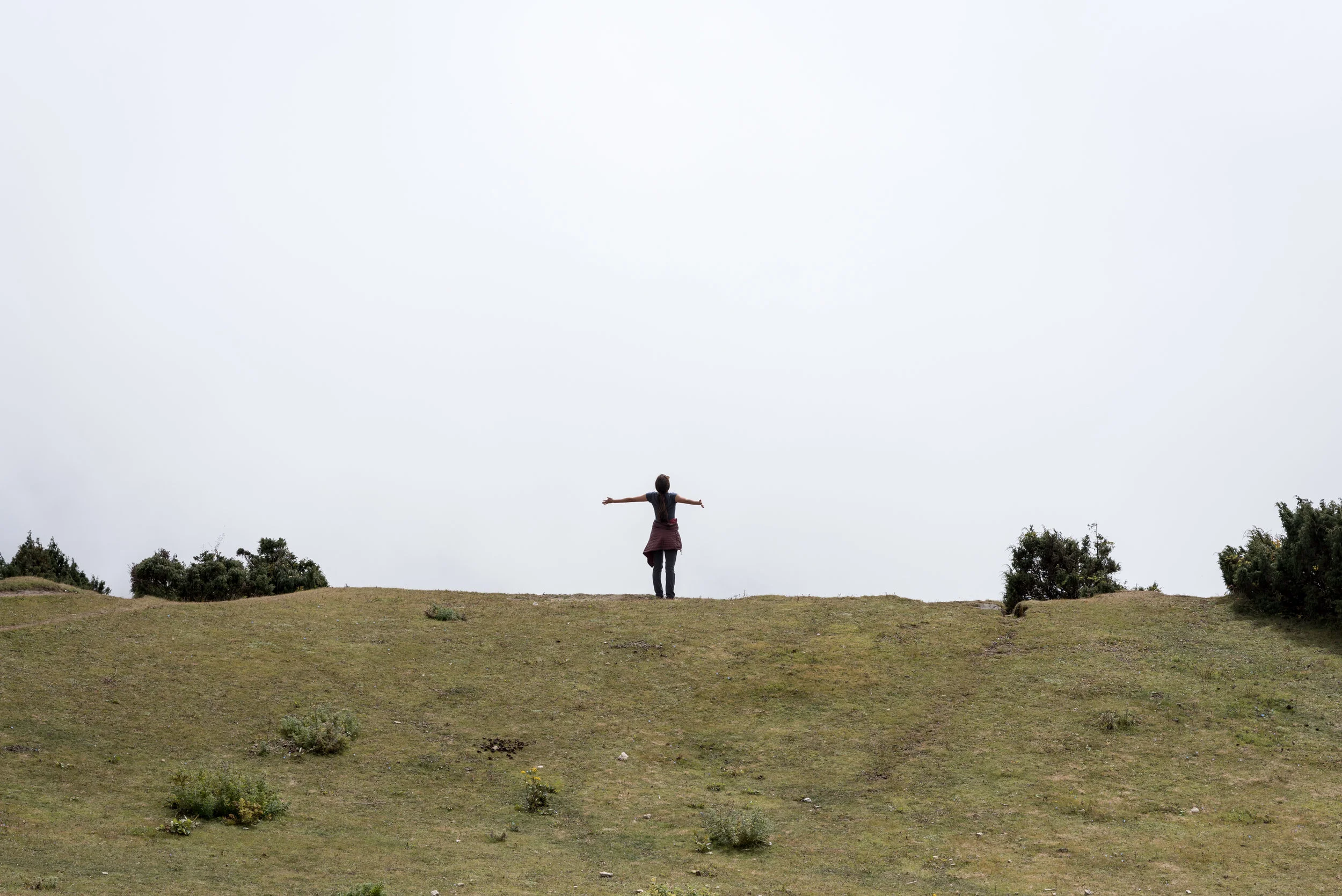The mental alarm went off at 5am. Breakfast was packed and we were out the door by 6, ready to take advantage of the typically clear mornings. Our hike up the valley would be flanked by snow-capped peaks as we would spend our breaks trying to identify which was which from our map. We’d be floating on air, energized by the surroundings, unencumbered by the high altitude. It was going to be the quintessential day hiking in the Himalayas.
Until it wasn’t.
Thick clouds blanketed our route, as we descended all the way to the valley floor before climbing back out and up half again as high as we started. With each hour, we anticipated the clouds would burn off, but alas, they never did. Again, our gaze was forced towards what lay in front of us instead of above us. Again, what the sky hid from us was revealed through a different medium: through a serene and beautiful monastery in the hilltop town of Tengboche, through joyous conversation with an Israeli couple turned trekking partners, through internal self-reflection and thought between trying to catch a breath, and through the comfort of a hot glass of ginger-lemon-honey tea after a long day of hiking downhill, uphill, but seemingly never flat terrain.
The next morning in Pangboche, through the condensation of the tea house window and the sleep in my eyes, I glimpsed a patch of bluish-purple sky. Immediately, I rushed outside into the freezing cold morning, anxious to see what could be seen. And see I did. As clear a morning as imaginable, right in front of us lay a double peak, jetting into the sky, looking like a combination of the Matterhorn and Mt. Fitzroy: Ama Dablam, my pick for most attractive in the Khumbu. The morning sun glow behind it, lighting up the entire valley, peaks all the way down. I’d found what I’d come for, just waiting to be explored, seen from every angle, admired, even climbed perhaps. The day’s hike took us through Dingboche, another town engulfed by surrounding peaks, and onto Chukung, a resting place for 2 days prior to tackling the first of three passes. Upon arrival in Chukung, we found ourselves at what seemed like the foot, or perhaps the heel, of Lhotse, a neighbor to Everest, standing at over 26,000 feet. The face of Lhotse, along with its sister peaks, dominated the Skyline with a jagged ridge and rocky, snow-covered face. While other peaks were somewhat majestic, to me, Lhotse felt ominous, like it meant business. We sat in awe as we attempted to recover from our slightly-too-quick ascent from Pangboche, feeling the effects of our 15,000+ foot elevation.
Our recovery and acclimatization day was spent, you guessed it, hiking. We took an offshoot trail to Island Peak base camp, making our way through glacial river bed run-offs, enjoying some flat terrain as we took in the beauty surrounding us. The scale of everything becomes mesmerizing, as you realize the peaks in front and around are up to 2 miles above. The sense of scale and scope stop functioning, what’s truly known is just how small we ourselves become, that the small rock seen tumbling down the glacier face across the way is most likely the size of a car, and that the trail in the distance, the one that seems to endlessly go in one direction and slope (up and steep) is on the docket for tomorrow.
As the clouds part and the air gets thinner, the breaths become harder, and the steps become slower. We are continuously reminded of the effort required to do what we came for, and must make the conscious effort to continue towards the peaks and passes in front of us, and those hidden as of yet, but that we know await.
And so we go…








